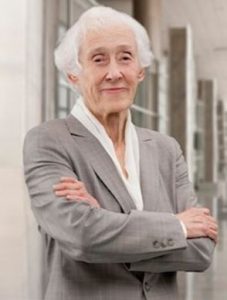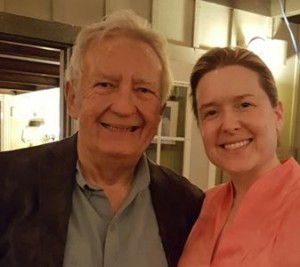 American healthcare reform debates are focused on strategies to provide “access” to medical services for all. Lack of insurance (or under-insurance) seems to be the primary focus, as it is falsely assumed that coverage provides access. Unfortunately, the situation is far more complicated.
American healthcare reform debates are focused on strategies to provide “access” to medical services for all. Lack of insurance (or under-insurance) seems to be the primary focus, as it is falsely assumed that coverage provides access. Unfortunately, the situation is far more complicated.
Once a person has health insurance, there is no guarantee that they will receive the medical services that they need. Not because their plan is insufficiently robust, but because the roadblocks for approval of services (provided in the plans) are so onerous that those providing the service often give up before they receive insurance authorization. In my experience, whether or not the patient gets the service, test or procedure that they require often depends on the individual will and determination of their physician. And that’s something we need to talk about.
Take for example, admission to an inpatient rehabilitation facility. Brain-injured patients aren’t much different than those with broken bones. We all know that bones need to be set (or surgically repaired) right away so that they will heal correctly. The brain is very similar – once injured, it needs to be rehabilitated in an intensive, multi-disciplinary environment at the earliest chance for it to achieve its best healing. Nevertheless, insurance companies regularly deny brain injury rehab to patients in the critical healing time frame. They will approve nursing home care for them, but not the intensive cognitive rehabilitation that they need, unless the rehab physician fights an epic authorization battle that can take 10 days or more to overturn the denial of services! Imagine if your orthopedist had to beg, lobby, and testify for 10 days to fix your broken hip (while the insurance company simply approved you go to a nursing home)? Would he or she be willing to do this? What would happen to your hip in the mean time?
The “prior authorization” process for imaging studies and non-formulary medications is also designed to wear down the providers and passively deny services to patients, thereby saving costs for the insurers. Patients don’t realize that getting an MRI might mean an hour of automated phone system “hell” for their physician, waiting to speak to an insurance customer service rep with an algorithm that determines whether or not the patient is eligible for the service – unrelated to the physician’s judgment or the particulars of the patient case. In the average American primary care practice, an estimated 20 hours per week is spent by physician and staff, attempting to secure insurance approval for necessary tests and medications. Will your physician have the endurance to prevail? That might be the difference in diagnosing your cancer early or not.
“Oh,” but the insurance companies say, “we had to put these bumps in the road to prevent over-testing and abuse of the system.” I agree that there are some bad actors who should be identified and stopped. Think of the phony durable medical equipment providers, bilking Medicare and private insurers by prescribing unnecessary and expensive wheelchairs, scooters, and other devices. These bad apples are rare, but because of them – all the “good guys” are being hen-pecked to death just to get a walker for a patient with multiple sclerosis.
Unfortunately, there is no incentive for the private insurers to lift the pre-authorization burdens from the “good guy” physicians. Therefore, this will probably have to be achieved through legislation. With big data, it should be fairly easy to identify extreme provider outliers – and have their practices reviewed. For the rest of us, our pattern of judicious prescription of tests, services, and procedures should win us a break from the daily grind of begging, wheedling, and cajoling payers to allow us to get our individual patients what they need, every single time we order something. Until this freedom to practice medicine is achieved, true access to healthcare will not simply be a matter of having health insurance, it will be whether or not your physician has the will to fight for your needs. A “good doctor” has to be more than an excellent diagnostician these days – she must be a savvy, health insurance regulatory navigator and relentless patient advocate. Keep that in mind as you choose your next physician!


 Medical school prepares physicians to prescribe medications for prevention and treatment of disease, but little to no time is spent teaching something just as important: de-prescribing. In our current system of auto-refills, e-prescriptions, and mindless “check box” EMR medication reconciliation, patients may continue taking medications
Medical school prepares physicians to prescribe medications for prevention and treatment of disease, but little to no time is spent teaching something just as important: de-prescribing. In our current system of auto-refills, e-prescriptions, and mindless “check box” EMR medication reconciliation, patients may continue taking medications  I receive a significant amount of email in response to
I receive a significant amount of email in response to  The New Yorker recently featured
The New Yorker recently featured  At the risk of vilification by my peers, I’m going to say something extremely unpopular. We physicians have it pretty good financially. Our salaries are generous, and we have a much higher standard of living than most others in America. When I read
At the risk of vilification by my peers, I’m going to say something extremely unpopular. We physicians have it pretty good financially. Our salaries are generous, and we have a much higher standard of living than most others in America. When I read  Over 1 million
Over 1 million  Rehabilitation medicine is one of the best-kept secrets in healthcare. Although the specialty is as old as America’s Civil War, few people are familiar with its history and purpose. Born out of compassion for wounded soldiers in desperate need of societal re-entry and meaningful employment, “physical reconstruction” programs were developed to provide everything from adaptive equipment to family training, labor alternatives and psychological support for veterans.
Rehabilitation medicine is one of the best-kept secrets in healthcare. Although the specialty is as old as America’s Civil War, few people are familiar with its history and purpose. Born out of compassion for wounded soldiers in desperate need of societal re-entry and meaningful employment, “physical reconstruction” programs were developed to provide everything from adaptive equipment to family training, labor alternatives and psychological support for veterans. We’ve all heard the saying, “age is just a number.” Nowhere is that more important than in the hospital setting. Over the years I’ve become more and more aware of ageism in healthcare – a bias against full treatment options for older patients. Assumptions about lower capabilities, cognitive status and sedentary lifestyle are all too common. There is a kind of “senior profiling” that occurs among hospital staff, and this regularly leads to inappropriate medical care.
We’ve all heard the saying, “age is just a number.” Nowhere is that more important than in the hospital setting. Over the years I’ve become more and more aware of ageism in healthcare – a bias against full treatment options for older patients. Assumptions about lower capabilities, cognitive status and sedentary lifestyle are all too common. There is a kind of “senior profiling” that occurs among hospital staff, and this regularly leads to inappropriate medical care. Even though I don’t have an outpatient practice, I like to keep in touch with some of my patients after they’ve discharged from the rehab hospital. Jack is one of my very favorite success stories.
Even though I don’t have an outpatient practice, I like to keep in touch with some of my patients after they’ve discharged from the rehab hospital. Jack is one of my very favorite success stories.
 Dr. Val Jones and patient Patricia Crocker-Fox in Spokane, WA.
Dr. Val Jones and patient Patricia Crocker-Fox in Spokane, WA.